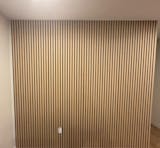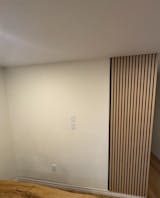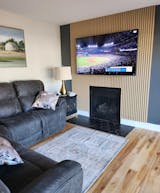With environmental issues becoming critical, it is important to use sustainable and eco-friendly materials in all areas of our lives, including soundproofing. Soundproofing is a crucial element in creating a peaceful and comfortable living or working environment. However, it historically involved using materials that are harmful to the environment and lack sustainability
In this blog post, we will explore some eco-friendly options for soundproofing a space. These materials can soundproof a space without compromising on quality or effectiveness.
Wool:
The dense fibers of wool make wool carpets and rugs a good solution for absorbing sound waves. Wool is a natural and sustainable material that has excellent sound absorption. It is also fire-resistant, moisture-resistant and has natural antimicrobial properties. Wool insulation is available in batts and rolls to soundproof walls, floors and ceilings. Wool is also a great option for soundproofing home theatres
Wool batts or blankets can be installed between wall studs or ceiling joists to reduce sound transmission between rooms. Wool panels also reduce the transmission of sound waves and improve acoustics in a space. Manufacturers typically compress layers of wool fibers together to form a dense, acoustically absorbent material which can then be installed as panels on walls, ceilings, or floors.
Denim:
Recycled denim is another eco-friendly option for soundproofing. Denim insulation, made from recycled cotton fibers, is non-toxic and hypoallergenic, making it a safe option for indoor use. You can also use it in batts or rolls to soundproof walls, floors and ceilings. Its non-toxic and hypoallergenic, making it a safe option for indoor use
Manufacturers typically shred old denim into small pieces and treat it with a flame retardant to make denim insulation. They also compress layers of denim fibers together to form a dense acoustically absorbent material for acoustic panels.
Hempcrete:
Hempcrete is another sustainable and eco-friendly building material made from hemp fibers, lime and water. It is lightweight, durable, and has excellent thermal and acoustic properties. Hempcrete can be used to soundproof walls, floors and ceilings
Hempcrete can be used to build walls typically thicker than traditional walls and are effective at absorbing sound. The sound that travels through them can be reduced by up to 50%. The porous nature of hempcrete also makes it a great option for insulation between walls and flooring. Hempcrete is also resistant to mold and pests making it a healthy choice for indoor environments.
Cork:
Cork is a sustainable material that has excellent soundproofing properties. It is a natural and renewable resource, harvested from the bark of the cork oak tree. Cork has a unique cellular structure that makes it an excellent sound absorber. It is also lightweight and easy to install. Cork, used in combination with other materials is a great option for soundproofing walls, floors and ceilings
Cork wall tiles and cork underlayment under flooring can be installed to reduce impact from footfall that would be heard by those on the floor below.
Conclusion:
As environmental awareness continues to rise, choosing sustainable and eco-conscious materials has become essential in modern design and construction. Soundproofing is no exception. While traditional soundproofing often relied on synthetic or non-renewable materials, today there are innovative, nature based alternatives that deliver high performance without compromising environmental responsibility.
At Wallparta, we believe that a peaceful environment should also be a responsible one; which is why our acoustic wall panels are engineered using sustainable wood veneers and recyclable acoustic felt backing to deliver both natural beauty and superior sound absorption.
In addition, WallParta panels are crafted using responsibly sourced real wood veneers on recycled acoustic felt, delivering:
- Class-A acoustic performance.
- Sustainable materials certified to E1 and CARB P2 standards.
- Aesthetic enhancement; turning any wall into a design feature.
- Easy installation with minimal waste.
These panels offer all the environmental and acoustic benefits of traditional materials while adding warmth, architectural beauty to homes, offices, cafés, studios, and commercial spaces.
Eco-friendly soundproofing materials such as wool, recycled denim, hempcrete, cork, and wood based acoustic slat panel systems like Wallparta are transforming the way we build interior spaces. They not only reduce noise but also contribute to a healthier planet. Choosing these sustainable options is a win-win; improving everyday comfort while supporting environmental responsibility.
If you're looking for an eco-conscious solution that blends performance with design, Wallparta acoustic panels are the perfect choice to elevate your space naturally and sustainably.














